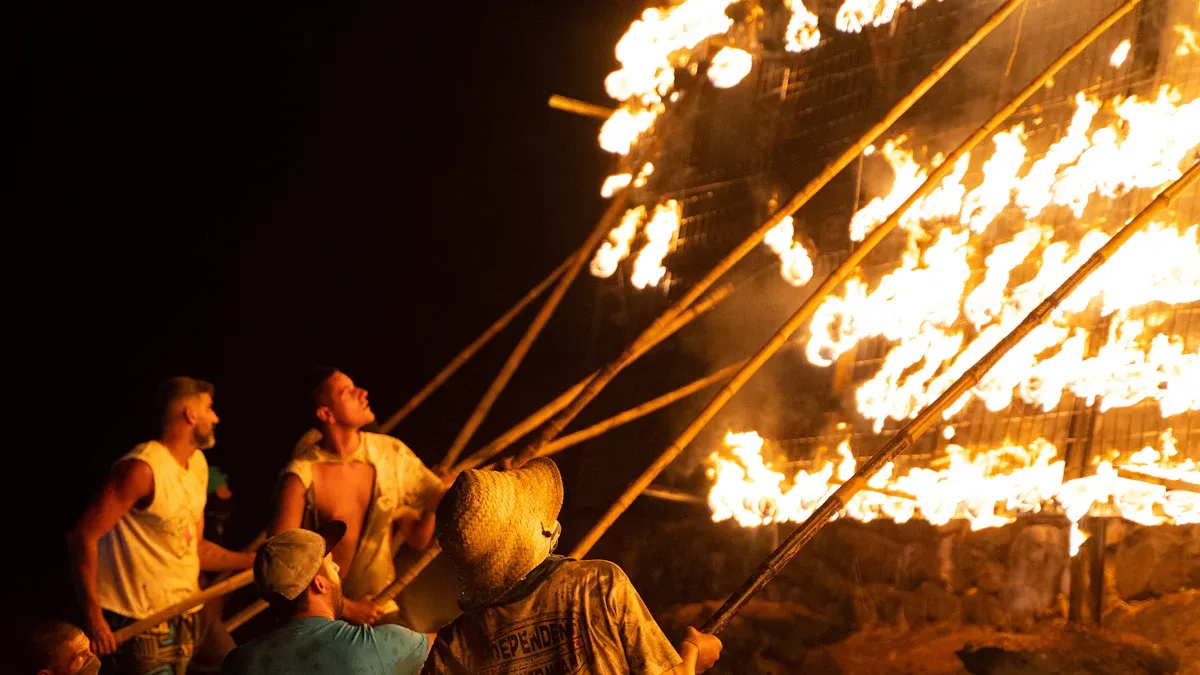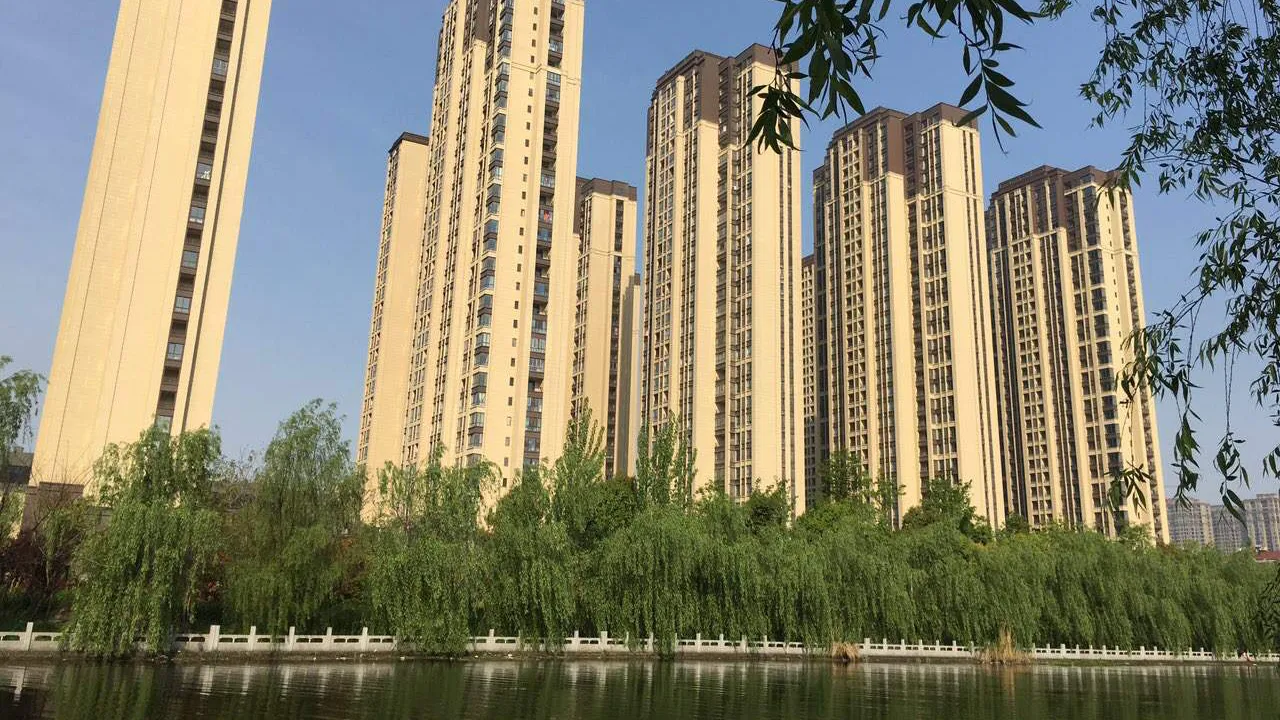
Fire safety for cultural heritage sites is very important. These sites have special problems that need quick action. The risk of fire is higher here. This is because of their old materials and designs. This makes safety harder to manage. New ideas are needed to deal with today’s fire risks.
Look at the table below. It compares fire risks at cultural heritage sites with other buildings:
Aspect | Cultural Heritage Sites | Other Buildings |
|---|---|---|
Fire Safety Approach | Performance-based approach allows customization | Prescriptive approach often applied |
Risk of Fire | Higher due to historical materials and design | Generally lower with modern materials |
Escape Route Challenges | Often inadequate without compromising aesthetics | Typically designed for safety |
Historical Value | Must be preserved, complicating safety measures | Less historical significance |
Compliance with Safety Standards | Often incompatible with current standards | Generally meets current standards |
You will see that whether in Egypt, Africa, the Middle East, or faraway heritage sites, similar problems exist. This writing gives a complete and hopeful view on these important issues.
Key Takeaways
Cultural heritage sites have special fire risks. This is because of their old materials and designs. It is important to understand these risks for good fire safety.
New technologies, like smart detection systems, can help a lot. They give early alerts and make response times faster.
Community involvement is very important for fire safety programs. Getting local residents involved raises awareness. It also encourages them to help with fire prevention.
Using fire-resistant materials and dividing spaces can protect cultural sites from fire damage. This helps keep their historical value.
Learning from past fire incidents helps create better fire safety practices. Each site needs a special Fire Risk Management Plan for its own challenges.
Fire Safety Challenges

Vulnerabilities of Cultural Sites
Cultural heritage sites have special weaknesses that raise their fire risk. Knowing these weaknesses shows why good fire safety measures are needed. Here are some important signs of vulnerability:
Vulnerability Indicator Category | Description |
|---|---|
1. Structural Vulnerabilities | Signs about the physical strength of the heritage site. |
2. Material Vulnerabilities | Signs about how easily materials can catch fire. |
3. Environmental Vulnerabilities | Signs that look at the area around the site and its fire risk. |
4. Human Factors | Signs that think about human actions that can cause fires. |
The materials and designs of heritage sites often add to their fire risk. Old materials, like seasoned wood, make fires more likely. Hidden spaces and changes that are not recorded can help fires spread, while thick stone walls might weaken in a fire. Also, seasoned wood in floors and poor separation can create fire dangers.
You should think about how the environment affects fire risk too. For example, plants nearby can catch fire easily. Human actions, like storing flammable items incorrectly, can make risks worse.
Historical Fire Incidents
Past fire incidents remind us of the risks for cultural heritage sites. These events show the need for better fire safety measures. Here are some important incidents that have impacted cultural heritage sites around the world:
Date | Incident Description | Location |
|---|---|---|
Fire destroys the 140-year-old wooden structure of Lutsen Resort. | Minnesota | |
February 16 | Fire damages hundreds of paper works, some dating back to the seventeenth century. | Seattle |
February 17 | Sze Yup Temple severely damaged by fire, destroying interior decorations. | Sidney |
March 19 | St. Augustine Church destroyed by fire, built in 1896. | St. Louis |
March 22 | Wise County Heritage Museum destroyed, housing over 6,000 historic documents. | Texas |
April 16 | Copenhagen Stock Exchange damaged, causing the collapse of the Spire tower. | Copenhagen |
May 28 | St. Theodosius Church seriously damaged, extensive roof damage. | Cleveland |
June 9 | St. Ann’s Anglican Church severely damaged, destroying murals inside. | Toronto |
January 5 | Fire at Singer Sewing Industrial Site, significant damage to historic buildings. | New Jersey |
January | Cultural heritage sites in Ukraine and Gaza Strip suffer serious damage. | Ukraine/Gaza Strip |
These fires often happen because of common problems, like broken electrical equipment or arson. For example, between 1999 and 2002, several museum fires in the U.S. caused about $1 million in losses each year due to faulty electrical equipment. In Germany, a historic farm lost millions because of arson in 2006.
The effects of these fires go beyond just physical damage. They can cause the loss of priceless artifacts and historical records that cannot be replaced. As you think about these incidents, remember how important it is to have fire safety measures to protect our cultural heritage for future generations.
Advancements in Fire Safety Technology

Smart Detection Systems
New smart detection systems have changed fire safety for cultural heritage sites. These systems use wireless technology that does not disturb sensitive areas. They help find fires early and send alerts from a distance. This is very important for keeping valuable cultural items safe. Here are some main features of these systems:
Multiple Sensors: They can find smoke, heat, and carbon monoxide. Smart algorithms tell the difference between real fire dangers and safe conditions.
Real-Time Monitoring: These systems watch continuously, so they can quickly respond to fire risks.
Digital Tools: You can plan inspections and check system performance easily.
These smart detection systems are very effective. They can greatly lower fire response times. For example, a multi-object detection model can react in just 2 seconds. Traditional fire alarms might take up to 20 seconds. This quick response is crucial for protecting cultural heritage sites.
Detection Method | Case 1 (s) | Case 2 (s) | Case 3 (s) |
|---|---|---|---|
Multi-object detection model | 2 | 2 | 1 |
Traditional fire alarms | 20 | 13 | 7 |
Fire-Resistant Materials and Compartmentalization
Fire-resistant materials are very important for saving cultural heritage buildings. These materials slow down and stop the spread of fire and smoke. There are many ways to use fire-resistant materials in preserving heritage:
Fire Compartmentation: This method splits a building into smaller parts using fire-resistant materials. It works as a passive fire protection method, meaning it does not need active systems like alarms.
Fire-Retardant Coatings: These coatings add a layer that slows down ignition and heat transfer. They come in two types: non-intumescent and intumescent, which work differently when they catch fire.
Using fire compartmentation can greatly lower the chance of fire spreading in a historic building. This method helps keep the building strong and allows for safer evacuations and better firefighting efforts.
Successful Fire Safety Implementations
Case Studies of Cultural Sites
Many cultural sites have done a great job improving their fire safety. Here are some important examples:
Nan’an District: Fire safety scores for heritage buildings went up a lot. The scores showed moderate to low risk levels. The lowest score was 3.03, and all scores were above 3. This means fire safety conditions are generally good. Better fire management practices helped make this happen.
Chongqing Image Cluster: This site has better fire safety because of careful design and building improvements made during relocation. On the other hand, the Longmenhao cluster had problems because preservation efforts made upgrades hard.
These examples show that focused fire safety upgrades can really help protect cultural heritage.
Lessons Learned
From these successful cases, we can learn some important lessons:
More focus on cultural heritage strength: Sites need to handle and recover from damaging events.
Effects of climate change: Extreme weather is a growing threat to cultural heritage, so we need to take action.
Using new technologies: Tools like digital twins and IoT improve monitoring and protection.
Awareness of arson risks: Cultural buildings need more efforts to stop arson.
Learning from past events: Looking at past fires helps us make fire safety better in the future.
These lessons have shaped fire safety rules for protecting cultural heritage. They stress the need for specific Fire Risk Management Plans (FRMPs) for each site. It is also important to include traditional knowledge and community help in fire risk management. This complete approach includes prevention, preparedness, emergency response, and recovery, while valuing local skills in fire management.
Future Fire Safety Practices
Integration of Technology and Strategy
You can make fire safety better at cultural heritage sites. This can be done by mixing new technology with old methods. This way, you keep the original look of these sites while making them safer. Here are some helpful technologies:
Technology | Advantages |
|---|---|
Uses wireless technology, keeps the building looking good, has smart sensors for early fire detection. | |
Non-addressable Fire Alarm Controller | Saves money, improves safety, uses advanced technology for quick alerts. |
You can see these technologies working well at places like the Old Royal Naval College and Traquair House. These examples show how to mix new ideas with the need to keep history intact.
To find this balance, think about these strategies:
Use technology that fits with old practices, like using augmented reality in museums to improve visitor experiences without changing artifacts.
Work together with different groups, including tech experts, conservationists, and local people, to get a full view on preservation.
Use sustainable development practices that respect historical contexts while being kind to the environment.
Teach and inform communities to inspire them to support the protection of their cultural heritage.
Create rules and guidelines that help new solutions while keeping important historical sites safe.
Stewardship means taking care of historic places. It focuses on balancing authenticity with modern needs. It highlights long-term thinking, community involvement, and teamwork to make sure decisions honor cultural heritage while facing future challenges.
Community Involvement and Education
Community involvement is very important for fire safety programs at cultural heritage sites. Working with the community helps you teach people about fire risks and how to prevent them. Here are some key benefits of community involvement:
Awareness and education: Engaging with the community helps fire prevention programs teach the public about fire risks and prevention strategies.
Building trust: Community engagement builds trust between fire prevention programs and the community, encouraging people to follow safety measures.
Encouraging participation: Active community involvement leads to more people joining fire prevention efforts, making safety better.
You can create educational programs to inform the community about fire safety. Workshops, seminars, and outreach activities can help raise awareness and encourage positive actions. When communities understand fire safety’s importance, they care more about protecting their cultural heritage.
Also, think about partnering with local groups and schools. These partnerships can boost your outreach and create support for fire safety efforts. By working together, you can build a stronger base for preserving cultural heritage sites.
In conclusion, there are big challenges in making fire safety better for cultural heritage sites. You need to use new technology to improve how fires are detected and prevented. Learning from successful examples shows what works best. Planning for the future means always improving fire safety in Egypt, the Middle East, Africa, and faraway heritage sites.
Working together is very important. Groups like regulatory bodies, fire departments, and preservation commissions should join forces to create special standards. You can use hidden fire detection systems and suitable suppression methods that keep the historical look intact.
By pushing for better fire safety standards, you help protect cultural heritage for future generations.
FAQ
What are the main fire risks for cultural heritage sites?
Cultural heritage sites have risks from old materials, hidden areas, and poor escape routes. These issues make fires more likely and make safety harder to manage.
How can technology improve fire safety in cultural sites?
Technology helps fire safety with smart detection systems, fire-resistant materials, and real-time monitoring. These new tools find fires early and make response times faster.
Why is community involvement important for fire safety?
Community involvement helps people learn about fire risks and how to prevent them. Getting local residents involved builds trust and encourages them to join fire safety efforts.
What role do fire-resistant materials play in preservation?
Fire-resistant materials slow down the spread of fire and protect important artifacts. They help keep cultural sites safe while ensuring visitors and staff are protected.
How can I support fire safety initiatives for cultural heritage?
You can support fire safety by pushing for better standards, joining community programs, and teaching others about the importance of protecting cultural heritage sites.









